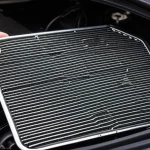Key criteria for selecting brake fluids for British racing applications
When choosing racing brake fluid for British sports cars, compatibility with their unique high-performance braking systems is crucial. British manufacturers often use systems that demand brake fluids with specific chemical properties to maintain optimal function under intense conditions. Selecting the right performance brake fluid ensures that seals and brake components remain intact and operate efficiently.
Boiling point plays a central role in brake fluid selection. During racing, brake fluids can reach extremely high temperatures; fluids with a high boiling point minimize vapor formation, preventing brake fade and maintaining braking power. Chemical stability is equally important, as it determines how well the fluid resists degradation over time and exposure to moisture—both vital for consistent performance.
Also read : Master the track: expert advice for optimizing gear ratios in british race cars
Racing applications impose additional demands like rapid response time and excellent fade resistance. A quality racing brake fluid provides immediate pressure transfer and retains performance even under repeated heavy braking. Understanding these criteria enables enthusiasts and professionals to select brake fluids that meet the rigorous standards of British motorsport, ensuring safety and top-tier performance.
Understanding brake fluid types and standards
Brake fluid types are classified primarily by the DOT (Department of Transportation) ratings, which indicate their chemical composition and performance levels. The most common standards are DOT 3, DOT 4, and DOT 5. DOT 3 and DOT 4 are glycol-based synthetic brake fluids, offering high boiling points vital for preventing vapor lock during heavy braking. DOT 5, in contrast, is a silicone-based fluid that is not compatible with systems designed for glycol fluids due to its different chemical properties.
Also read : The ultimate guide to preventing rust on coastal vehicles in the uk: expert tips and strategies
The differences between synthetic and mineral oil brake fluid lie in origin and functionality. Synthetic brake fluids (DOT 3, DOT 4) absorb moisture over time, which lowers their boiling point but ensures system protection and performance. Mineral oil brake fluids, less common in automotive use, are typically reserved for specific applications and require different system maintenance.
Manufacturers and racing series often specify strict compliance with particular brake fluid standards to guarantee safety and performance under stress. For example, high-performance racing vehicles will demand DOT 4 or DOT 5.1 fluids due to their superior thermal properties. Understanding these distinctions ensures choosing the right brake fluid aligns with both vehicle requirements and operational conditions.
Technical performance: laboratory and real-world considerations
Understanding brake fluid under pressure
Brake fluid’s boiling point is critical for high-temperature brake performance, especially in racing. Two key measures exist: the dry boiling point, representing new fluid without moisture, and the wet boiling point, which accounts for moisture absorption over time. Moisture ingress lowers the wet boiling point considerably, increasing risks of brake fade during intense use.
Due to its hygroscopic nature, brake fluid absorbs water from the atmosphere. This moisture reduces viscosity and boiling point, compromising braking efficiency. In a laboratory, dry brake fluid might show a boiling point above 260°C, but wet fluid often boils around 140°C. The lower wet boiling point reflects real-world conditions, where repeated heating and moisture absorption occur during a race.
For track and motorsport applications, selecting fluid with a high wet boiling point ensures more reliable braking and less fade. Teams often flush fluids regularly to maintain optimal performance. Understanding how moisture absorption affects viscosity and boiling point helps vendors and racers anticipate brake system behavior under stress, improving safety and consistency on the circuit.
Top recommended brake fluids for high-performance British racing cars
Choosing the best brake fluids is crucial for British racing cars like Aston Martin and Lotus, where consistent stopping power under extreme conditions matters. For UK motorsport enthusiasts, selecting a racing brake fluid that balances high performance with reliability is key.
AP Racing Radi-CAL R4 is often celebrated for its motorsport pedigree, formulated specifically to withstand the demands of intense racing. Its outstanding thermal stability and excellent resistance to brake fade make it a top choice among professional drivers.
Similarly, Millers Oils Racing Brake Fluid, a British-engineered product, offers superb compatibility with British sports cars such as Lotus and Aston Martin. Its formulation targets optimal performance at high temperatures, ensuring safer braking during endurance events.
Brands like Motul RBF 660 bring a high boiling point solution favored for its precision and durability, ideal for drivers seeking consistency over long sessions. These motorsport brake fluid brands together provide options tailored to the nuanced needs of UK racing circuits and British automotive engineering.
Maintenance and service guidelines for racing brake systems
Maintaining brake fluid in race cars is critical for consistent, high-performance braking. Due to extreme heat and stress, brake fluid often degrades faster than in standard vehicles. Regular brake fluid maintenance should follow strict schedules: a brake fluid flush is typically recommended every 6 to 12 months, depending on usage intensity. Neglecting this can cause reduced hydraulic pressure, leading to spongy brake feel or fading.
Performing a thorough brake bleeding process after replacing fluid ensures no air remains trapped in the brake lines, which directly affects pedal responsiveness. Bleeding techniques vary from manual to pressure-assisted methods, but all aim to maintain a fully hydraulic, air-free system.
Signs that brake fluid needs replacement include darkening color, a sour smell, or a drop in boiling point due to moisture absorption. Proactive fluid replacement protects against corrosion in the braking components and maintains safe, reliable performance under race conditions.
For effective race car maintenance, adhering to fluid replacement intervals and using only high-quality, manufacturer-recommended brake fluids ensures optimal system integrity. This preventive care not only extends component life but also upholds safety during intense competition.
Expert recommendations and authoritative resources
For those seeking motorsport brake fluid advice, experts consistently emphasize adherence to stringent standards. Leading racing teams and manufacturers stress selecting fluids that meet or exceed FIA recommendations, ensuring optimal performance and safety under extreme conditions.
British car club guides offer invaluable, up-to-date insights tailored specifically to vehicles common in the UK motorsport scene. These resources often collate real-world testing results and manufacturer feedback, providing practical advice on fluid choices and maintenance schedules.
Beyond printed guides, technical bulletins from racing authorities and fluid manufacturers deliver critical updates on emerging brake fluid technologies. Staying informed through these bulletins helps drivers comply with safety regulations while benefiting from advances such as improved boiling points and enhanced fluid longevity.
To maintain peak performance, professionals advise regular consultation of trusted sources, including British car clubs and official FIA communications. This approach ensures racers can navigate evolving compliance requirements and leverage the latest innovations in brake fluid chemistry confidently.


